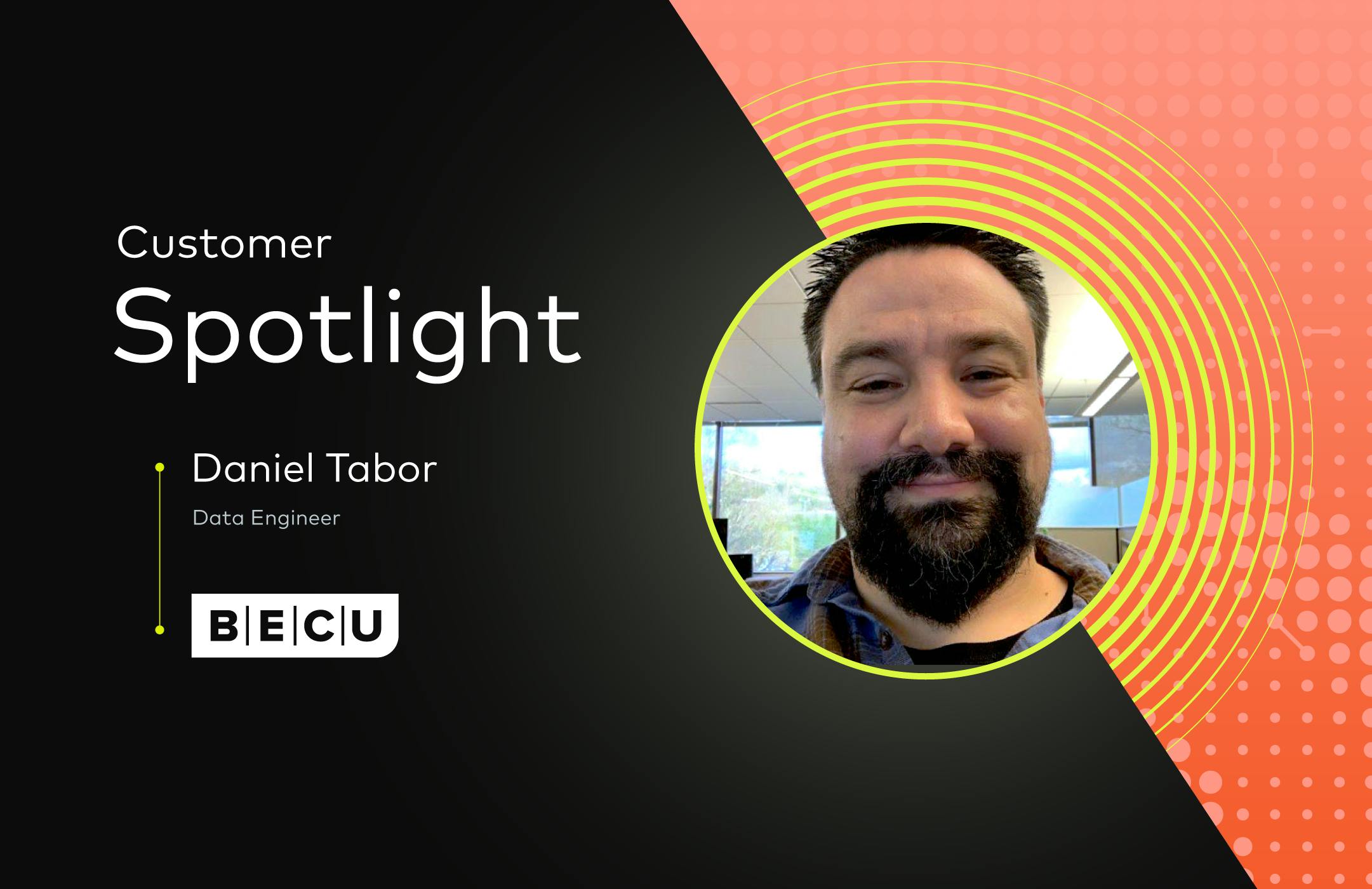We're back with another edition of Customer Spotlight, where we hear from the people using Amperity about how it lets them work their data magic.
Daniel in five:
Data Engineer at BECU for the last year, and previously was in a similar role at TrueBlue
Is an Amperity Admin, participated in the Sandbox beta, and actively works in the platform
Drives a lot of the continued product enablement, including setting up new data sources and new tables (in Sandbox), as well as building, running, and editing segments. In January alone, he ran over 130 segments
Co-led an Amperity overview to the internal BECU IT team which has continued to generate a lot of excitement in the organization
Enjoys multiple hobbies together with his family: hiking in the trails around the PNW, traveling and camping and canoeing, skiing with his son, building and flying drones, board games and video games they can play all together
How does BECU use the data you’re enabling in Amperity?
We use the data to self-serve many of the tasks that we were dependent on other team members or manual processes for before we started using Amperity. We use Amperity to create a 360 view of our members and use this for activities such as business performance dashboards, marketing activation, and member outreach and service.
The Amperity Customer 360 has also given us a holistic view of the customer that tells us how our products are performing and how our members are engaging with us. It’s helped educate our employees with a more complete view of our members and allowed us to be more proactive in how we service them, providing each employee with a strong foundation of understanding our members.
What kind of teams use Amperity's Customer 360 (Amp360) and what action do they take from it?
A whole bunch of teams — my team in Data Engineering, and also Marketing, Analytics, and Member Assistance (customer service).
This most helpful use case we put into action allows our members to go to our website and fill out a form to learn more about things like new products (for example, our Seahawks credit card), COVID assistance, or other questions. This form feeds Amperity directly and then is sent to our member services team, giving them a direct line of sight to call these members back. It has automated a workflow that otherwise would have depended on using our valuable IT resources. Now, we can self-serve creating new workflows like this.
“Before, updating an email dashboard would take 4-5 hours every day, then I would have to manually update it — now it’s done automatically.”
What are some of the most exciting use cases you’ve been able to light up with Amperity?
Building out the Customer 360 database to get an overall view of who our members are and what products and services they have. We use this for marketing segmentation and customer service segmentation.
Analytics teams use the data to measure business performance, and we’re planning to add campaign data to measure campaign performance.
What’s the coolest thing you’ve been able to do with data for BECU?
Automate from end to end. Before, we were updating an email dashboard and it would take 4-5 hours every day to run it, then I would have to manually update it — now it’s done automatically each day.
There is so much more I want to do. We have plans to automate more dashboards when we integrate campaign data in Amperity.
What is your favorite feature/capability in Amperity and what do you use it for?
How the Amperity ID can be used to show abnormalities in our data like people with duplicate addresses. This insight into our data is being used to help us model new databases and transition data between data sources within our own ecosystems. It’s also allowed us to identify and fix bugs in our own systems collecting and storing data.
I’m also a big fan of being able to import 2nd party data from our partners to identify our audience overlap so we can promote partner offers to these members.
And I love being able to write a quick query from a large dataset, and then access that query again later, because it is saved.
With all the progress you’ve already made, what’s next? What do you want to do with your increased capabilities?
I would love to use the machine learning model more to find different groups of data and segments of customers — for example, business users, members who used our website, members who went to a specific university, or people who need specific assistance. Once we have that we can better help the various member groups by offering relevant, timely information.
Thanks Daniel! And to our readers, we'll be back with more Customer Spotlight — in the meantime, you can check out previous installments here.
